Google Pixel
The next Google Pixels may have hidden cameras and sensors
Google Pixel 6 and Google Pixel 6 Pro have been a reality for a relatively short time – in many markets, including ours, they haven’t even arrived yet – yet we are already talking about the next generation of smartphones Made by Google: A patent fuels rumors that the Google Pixel 7 Pro may have a front camera and other sensors built into the display.
Google Pixel 7 with camera under the display?
Until a few years ago the front camera was usually inserted in the upper frame of smartphones; then came the phase of the notch (not yet completely overcome), with that of Google Pixel 3 XL the protagonist of countless memes. At present, the most commonly used solution is undoubtedly the hole, but the future will be of the cameras under the display and we already have several examples (just think of the internal one of Samsung Galaxy Z Fold3, or of ZTE Axon 30 and Xiaomi MIX 4 ).
Even Google intends to move in this direction and the patent of which we speak today demonstrates this clearly: filed by Google LLC at the USPTO (the United States Patent and Trademark Office) on August 31, 2021, relates to a ‘ configuration display for mobile computing devices ‘.
The documentation consists of 16 pages, was published last December 16, 2021, and describes the need to create more useful space for the display without increasing the size of the smartphone. In order to achieve a true full-screen experience, components such as the front camera will have to find their place elsewhere, i.e. under the display panel. As mentioned, other manufacturers have already embarked on this path and brought the first solutions of this type to the market.
This technology had even already been talked about in regards to smartphones Made by Google due to a previous patent dating back to last May. This time, however, the technology used is different: while the previous patent involved an auxiliary display and a prism, the new solution promises to be much less expensive: it should be an emissive display with a small non-emissive portion at the camera to allow in the light to pass in sufficient quantity to ensure good quality photos.
Under the OLED screen, there would be one or more cameras, a brightness sensor, and an optional sensor and/or a flash. The camera would be positioned in the upper right corner, the brightness sensor in the upper left one. Of course, as is already the case with current models, the fingerprint sensor is also placed under the display. The documentation does not talk about unlocking through face recognition, but on the other hand, Google abandoned the advanced form when it decided to eliminate the upper frame of its smartphones.
![]()
Valuable resources from Samsung Display
Google’s solution appears rather inspired – it is unlikely that Big G will be satisfied with mediocre photographic quality to use this technology – and in fact, its creation is due to a mind of a certain caliber: it is an invention of Sangmoo Choi, who he has been working for Google for three and a half years with a prominent position as a “Staff display hardware engineer” and who had previously gained considerable experience.
For 14 years, in fact, Mr. Choi worked for Samsung Display as a “Principal Engineer”, having had as his last assignment – according to his LinkedIn profile – that of “Team lead for new AMOLED technology development”.
On the other hand, Choi’s past at Samsung did not go unnoticed by the patent office examiner, who in the review refers to a patent of Samsung Electronics for a similar technology dating back to 2017. Based on this, several changes to the documentation presented by Google would have been necessary to allow the publication of the patent.
![]()
In fact, the technology illustrated by Google does not seem to differ much from that of existing smartphones with cameras under the display, which have the defect of an implementation that is not exactly invisible: not even Big G seems to have a solution for this limitation.
Waiting to understand if this solution will be ready to debut on the series consisting of Google Pixel 7 and Google Pixel 7 Pro, here are a couple of rendered images created by Technizo Concept.
Google Pixel
The Google Pixel 8 Pro has passed IMDA certification and is expected to be released on October 4
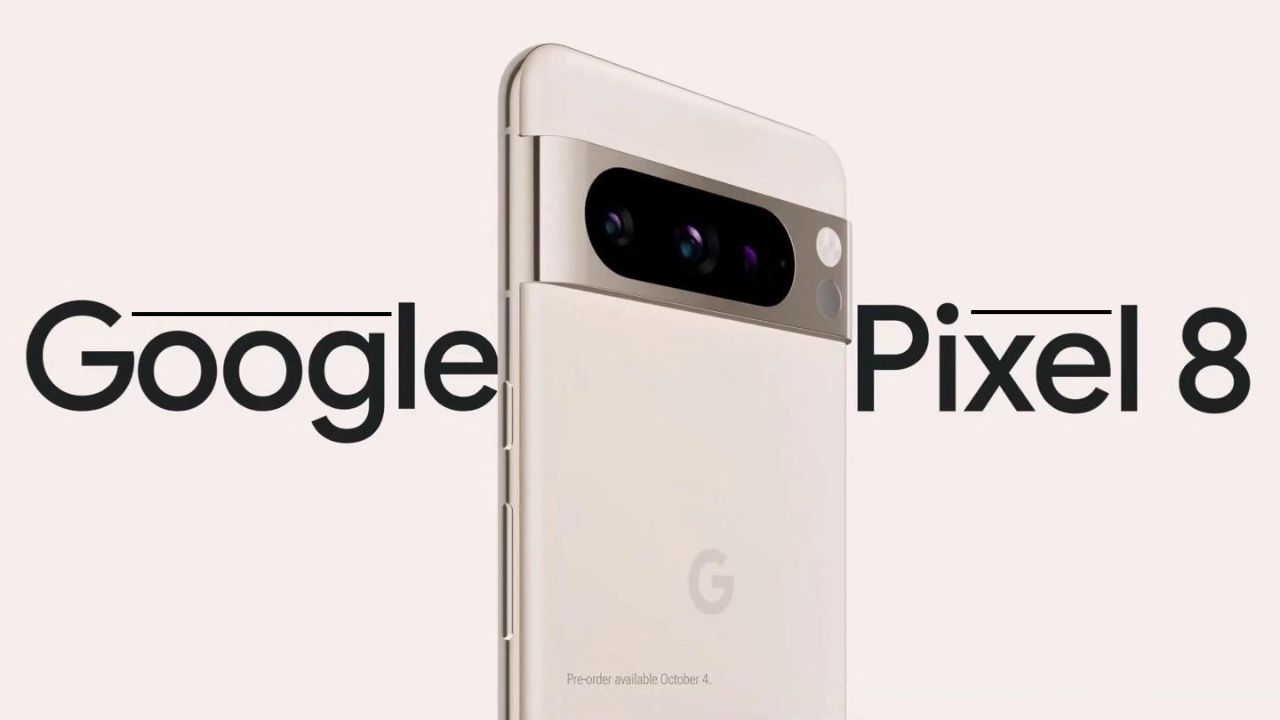
The Google Pixel 8 Pro has passed IMDA certification and is expected to be released on October 4, 2023. The phone is expected to come with 5G, 4G, UWB, WPT, and NFC connectivity features. The phone is expected to be a high-end device with a powerful processor and a large battery capacity. It is also expected to have a high-quality camera and a large display screen. The phone is expected to be available in multiple colors and storage options.
Google recently shared two preview videos, providing a sneak peek at the upcoming products set to be unveiled at their upcoming conference. These teasers revealed some highly anticipated releases, including the Pixel 8 series, Pixel Watch 2, and the all-new Pixel Buds Pro headphones. These videos have generated significant excitement among tech enthusiasts, setting the stage for the much-anticipated event.
A few days ago, the Pixel 8 Pro device also received certification from REL Canada and also received FCC certification.
![]()
According to previous reports, the Google Pixel 8 Pro is expected to come with a 6.7-inch LTPO OLED display with QHD+ resolution and 120Hz refresh rate. The phone will be equipped with a Tensor G3 chip and up to 12 GB of memory and 512 GB of storage space. It will have a built-in 4,950mAh battery and support 27W fast charging and wireless charging.
In other aspects, the phone is expected to use a rear three-camera design, including a 50MP main camera, a 64MP ultra-wide-angle lens, and a 48MP telephoto lens, and an 11MP front-facing selfie camera. The phone is expected to be available in multiple colors and storage options.
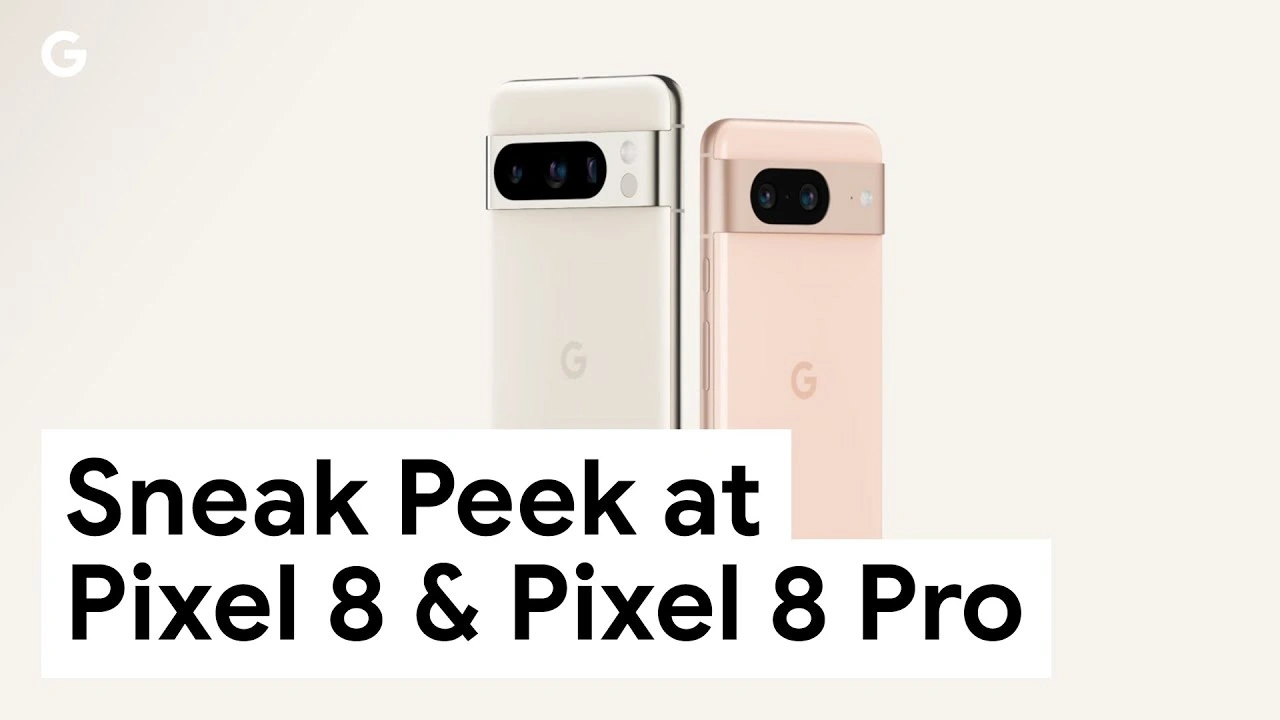
-
128GB is priced at 874.25 euros (IT House note: currently about 6784 yuan), and the price excluding tax is 710.77 euros
-
The price of 256GB is 949.30 euros (currently about 7367 yuan), and the price excluding tax is 771.79 euros.
Google will launch three storage options for Pixel 8 Pro: 128GB, 256GB, and 512GB. There are four colors: Bay (not sure what color this is), black, porcelain white, and mint green.
-
128GB is priced at 1235.72 euros (currently about 9589 yuan), and the price excluding tax is 1004.65 euros
-
The price of 256GB is 1309.95 euros (currently about 10165 yuan), and the price excluding tax is 1065 euros.
-
The price of 512GB is 1461.24 euros (currently about 11339 yuan), and the price excluding tax is 1188 euros.
| Telegram | Google News |
Google Pixel
Exclusive Leak: Google Pixel 8 Pro Emulator Reveals 360-Degree Phone Design!
The 360-degree mobile phone simulator for the Google Pixel 8 Pro was leaked online a few days ago. The simulator allows users to view the phone from all angles, including the front, back, and sides. It also shows off the phone’s different colors, which are Hazel, Obsidian, and Snow.
The simulator is consistent with previous leaks about the Pixel 8 Pro’s design. The phone is expected to have a 6.7-inch OLED display with a hole-punch cutout for the front-facing camera. It will also have a triple-lens rear camera system, with a 50-megapixel main sensor, a 12-megapixel ultrawide sensor, and a 48-megapixel telephoto sensor.
The Pixel 8 Pro is expected to be powered by the Google Tensor G3 chip and will have 12GB of RAM and 256GB of storage. It will also have a 4,950mAh battery with 27W fast charging.
The Google Pixel 8 Pro is scheduled to be released on October 4, 2023. The price is not yet known, but it is expected to be more expensive than the Pixel 7 Pro, which launched at Rs 84,999 in India.
![]()
The simulator also marked the location of the various sensors and interfaces on the phone, including the fingerprint sensor, the USB-C port, the speaker grille, and the microphone. It also showed the three colors of the phone, which are Hazel, Obsidian, and Snow.
The most notable new addition is the temperature sensor, which is located below the LED flash. This is the first time that a Google phone has had a temperature sensor. It is not yet clear what the temperature sensor will be used for, but it could be used to track your body temperature, measure the temperature of food, or control the temperature of your phone.
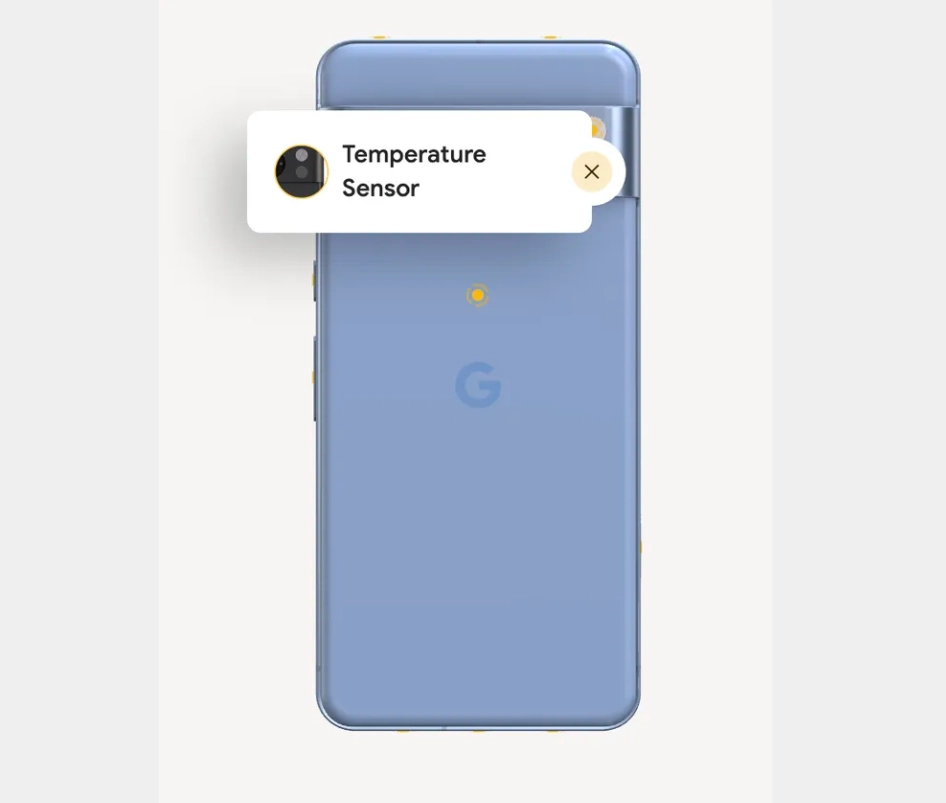
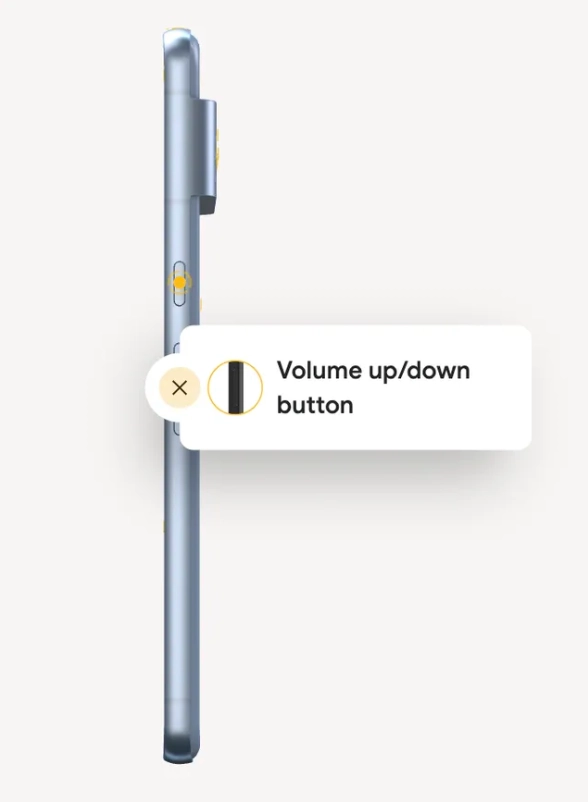
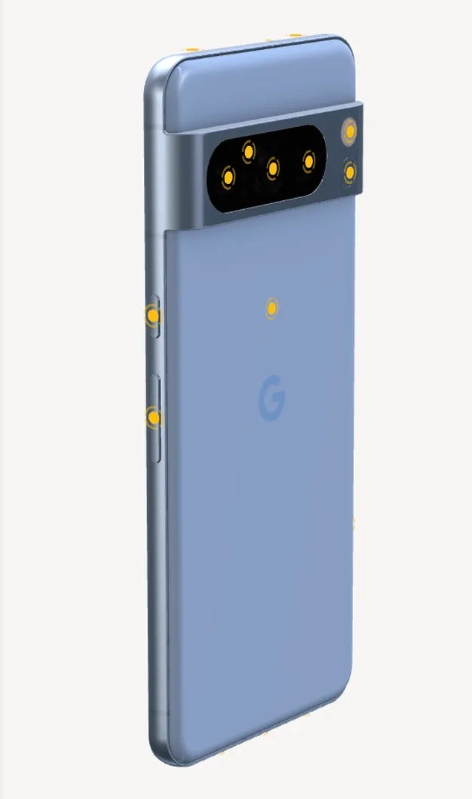
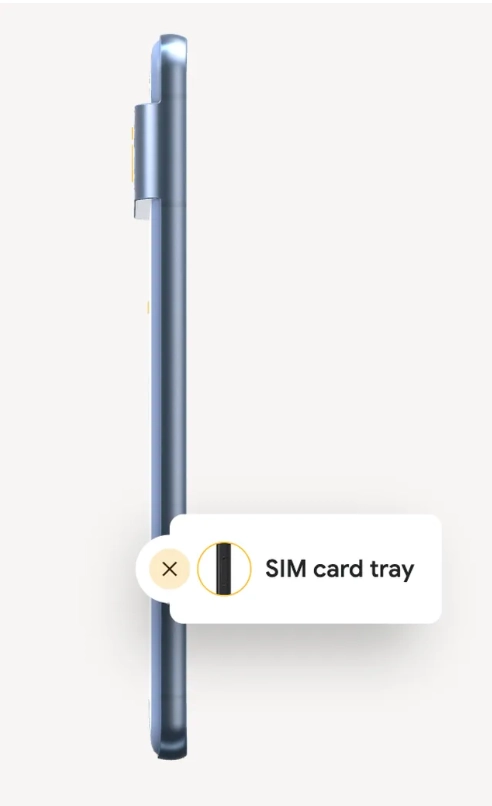
The Pixel 8 Pro is expected to have a 6.7-inch OLED display with a 120Hz refresh rate. It will be powered by the Google Tensor G3 chip and will have 12GB of RAM and 256GB of storage. It will also have a 4,950mAh battery with 27W fast charging.
The camera is one of the most important features of the Pixel 8 Pro. It is expected to have a triple-lens rear camera system, with a 50-megapixel main sensor, a 12-megapixel ultrawide sensor, and a 48-megapixel telephoto sensor. It will also have a 11-megapixel front-facing camera.
The Pixel 8 Pro is also expected to have a number of software features that will make it stand out from other phones. These features include Night Sight for videos, Magic Eraser, and Face Unblur.
I’m excited to see what Google announces for the Pixel 8 Pro next month. It has the potential to be one of the best phones of the year.
I agree, the mockups of the Pixel 8 Pro look great. I’m particularly fond of the light blue color. I’m also glad that the phone will still have a SIM card slot. This is important for people who travel frequently or who need to use two different SIM cards for work and personal use.
I didn’t notice any major software changes on the home screen either. However, I’m sure that Google will have some new software features to announce alongside the Pixel 8 Pro. I’m looking forward to learning more about them.
| Telegram | Google News |
Google Pixel
Pixel 7 series first pure 64-bit Android phone: Google
Recently Google has officially confirmed that the Pixel 7 series can only run 64-bit applications. A few days ago, blogger @MishaalRahman also told via Twitter that Google Pixel 7 series is supporting only 64-bit apps.
@MishaalRahman also pointed out that Android 13 on Pixel 7 phones doesn’t allow 32-bit apps to run, internally, the OS is still using some 32-bit libraries, which means that Google will intentionally run 32 -bit is preventing apps from running.
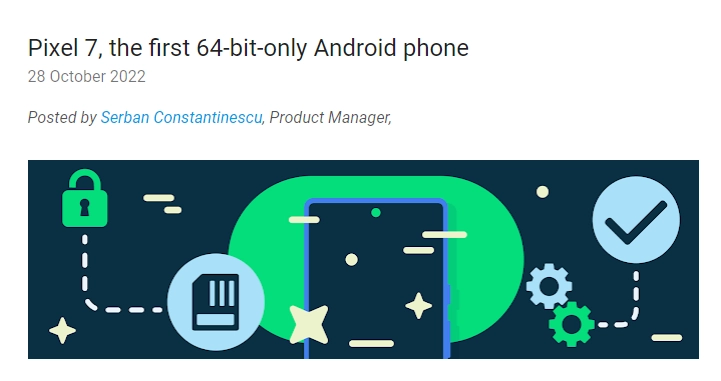
Google has shared some information about its Pixel 7 and Pixel 7 Pro phones in a blog post on the developer’s official website. Which clarified that the Pixel 7 series is the first pure 64-bit Android smartphone
Why did Google use 64 bit and what are its benefits
Google developers believe that 64-bit applications run faster than 32-bit applications because they can use additional registers and instructions that 32-bit applications cannot. Additionally, newer CPUs offer up to 25% performance gains when running 64-bit code, and some processors even drop support for 32-bit code entirely.
Plus, it can help improve security. The larger address space makes security such as ASLR more effective, and additional bits can be used to protect the integrity of the control flow. These countermeasures reduce the chance of an intruder taking control of the equipment.
Google’s developer experts say that removing support for 32-bit code can save up to 150MB of RAM, which the operating system uses even when 32-bit applications are not running. Due to this, the user gets more RAM space. Also, Google developers can use better tools like HWASan to detect device memory errors and improve application quality.
However, Google has clarified that pure 32-bit devices are still important for Android Go, Android TV, and Android Wear, and Google Play will continue to provide 32-bit applications for pure 32-bit devices.







